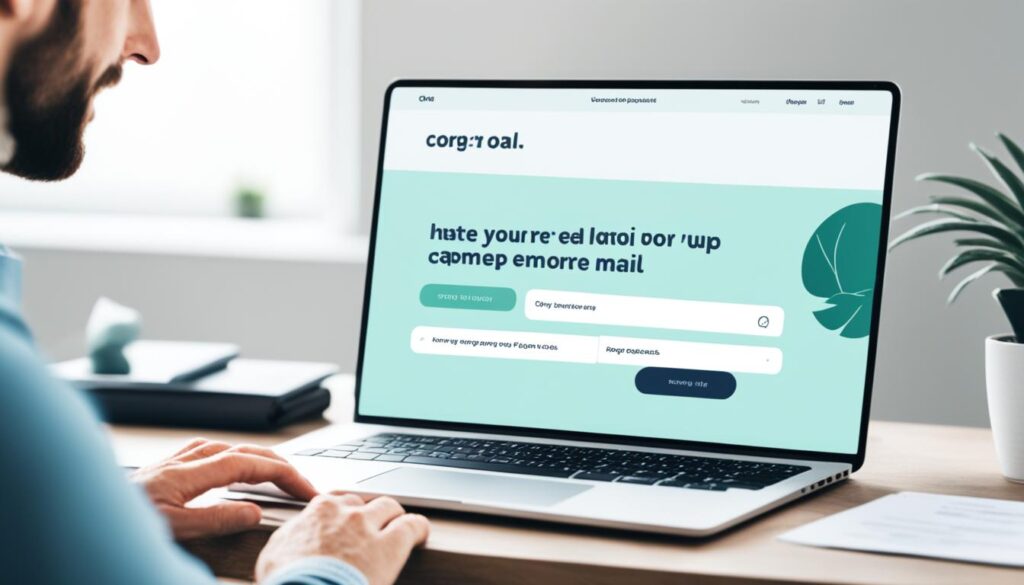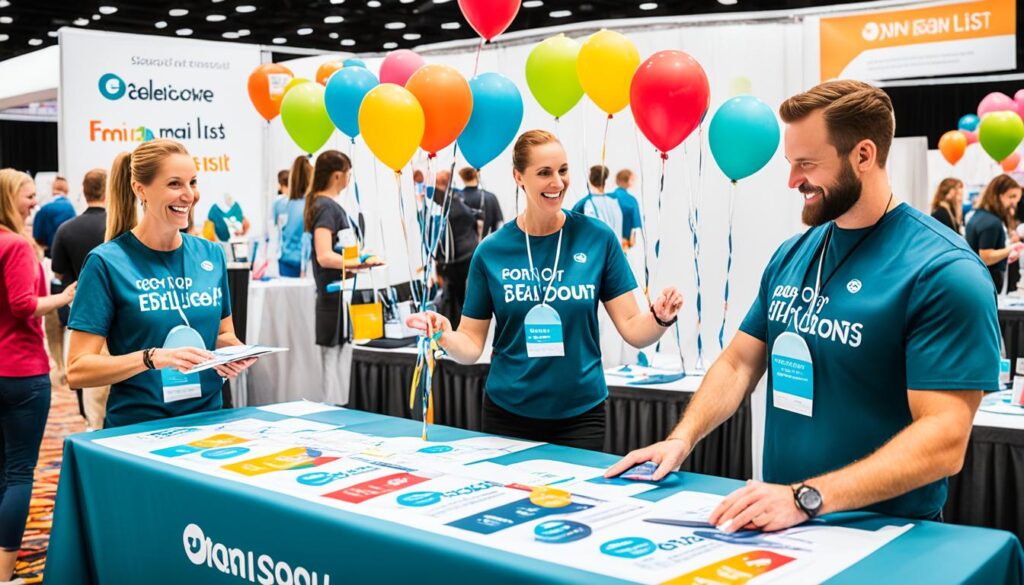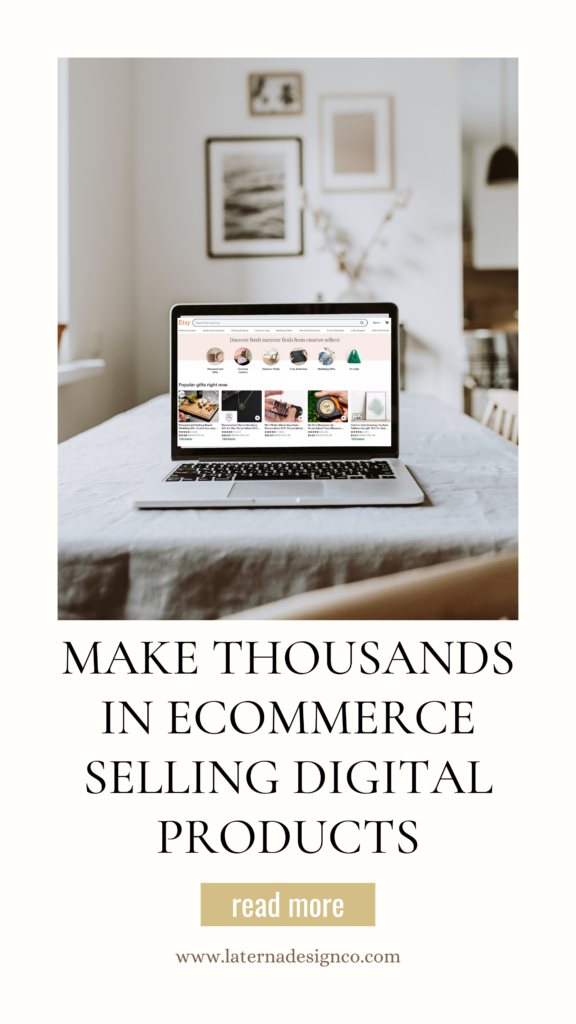
Imagine walking into a bustling marketplace where every vendor is vying for your attention. As you navigate through the vibrant stalls, one merchant offers a small, beautifully wrapped gift. Intrigued, you accept it, and suddenly, you find yourself returning to their stall, checking out other items they have and eventually making a purchase. This isn’t just a pleasant shopping experience—it’s a powerful marketing tactic.
The digital landscape operates on similar principles. The difference: your virtual ‘gift’ can be a compelling email, an exclusive discount, or valuable content. The practice of growing an email list is akin to forming a loyal customer base that you can engage with repeatedly. Statistics reveal that email marketing can earn businesses up to $42 for every dollar spent, showcasing its effectiveness as a digital marketing strategy1. Moreover, personalized landing pages have a 42% higher form submission rate than generic calls-to-action, indicating the significance of tailored messaging in capturing email signups1.
This article will walk you through key strategies to grow your email list for digital products and eCommerce, helping you achieve email marketing success and expand your reach. Whether it’s offering timely incentives, capitalizing on social media, or optimizing landing pages, the right techniques can turn casual visitors into dedicated customers. Let’s dive in and explore how you can harness the power of email marketing to boost your digital footprint.
Building an email list is key to a strong digital marketing plan. It lets businesses send targeted emails to customers. This is crucial for turning leads into loyal customers.
Email lists let you talk directly to your audience. This means you can engage with them in a way other channels can’t. HubSpot says personalized calls-to-action get 42% more views than generic ones2.
Also, 87% of brands say email marketing is key to their success3. Email marketing can bring back $42 for every $1 spent, making it a smart way to keep customers and grow4.
Email lists have big advantages over other marketing ways. For example, PPC ads might bring in $2 for every $1 spent, but email marketing can bring in $3643. This shows how valuable a strong email list can be.
Studies also show 80% of business pros believe email marketing keeps customers4. With open rates from 22% to 55%3, it’s clear email lists are important for marketing.
Also, 59% of consumers say marketing emails help them decide what to buy4. This shows email marketing’s big role in sales. Unlike social media or search ads, email marketing can directly affect buying choices. Adding email marketing to your strategy can greatly improve your marketing and customer engagement.
Building a strong email list is key for online businesses and eCommerce sites. It’s all about having a list that’s both relevant and follows the law, like GDPR.
For email list building, quality beats quantity. Having real subscribers means better engagement and less chance of them leaving or marking your emails as spam. High-quality lists can bring back about $44 for every $1 spent, showing their value5.
Real subscribers are more likely to like your emails than those who aren’t interested.
Segmenting your list by interests and actions makes sure your emails hit the mark. Personalized emails can really get people talking, building a loyal customer base5. Targeted strategies draw in people who really care, making them more likely to stay and keep their info safe.
Offering special deals or content can make your list grow by 25%-50%, depending on how good the offer is6.
Getting email marketing consent and following GDPR is a must for trust. Double opt-ins help meet legal standards and improve your reputation7. Handling data ethically builds trust and keeps your list reliable.
Expanding your email list is key for marketing digital products. Using opt-in incentives, lead magnets, and exclusive content can boost your subscription rates. Here are the best ways to grow your list.
Offering opt-in incentives is a great way to draw in new subscribers. Discounts on future buys can really encourage people to sign up. Studies show that offering incentives can greatly increase subscription rates8. Using WordPress plugins makes managing these incentives easy9.
Using lead magnets for engagement is another effective strategy. These can be free guides, eBooks, or templates that offer immediate value. Effective lead magnets attract new subscribers and show your expertise. For example, Creekside Nursery used high-quality lead magnets to grow their list10. Great lead magnets can also increase user engagement and subscriptions9.
Offering content exclusivity is another way to get people to sign up. By sharing unique, valuable content only with subscribers, you make a strong case for joining your list. Research shows that targeted email campaigns with exclusive content get much better results8. Sharing special deals or members-only content keeps your audience interested and connected to your brand9.
Email marketing is a key strategy for eCommerce businesses. It can greatly improve your results. By using certain tactics in your emails, you can boost your performance.
Email campaigns can bring in a big return on investment, with an ROI of 4400%11. Targeted emails get a 50% higher click-through rate than those without focus11. Email marketing also brings back $40 for every dollar spent, beating out other methods like search and social media11. This makes it the top choice for 85% of US retailers11.
Email marketing is great for boosting sales. For example, emails sent after cart abandonment can lead to a 20% conversion rate11. Loyalty emails also do well, performing 14 times better than regular emails and helping keep customers coming back11. Promotional emails can also increase customer engagement and profits. A 5% increase in customer retention can lead to a profit boost of 25% to 95%11.
Keeping customers coming back is key. Good tactics include sending follow-up emails after a purchase, starting loyalty programs, and asking for reviews11. Tools like Omnisend, Klaviyo, and ActiveCampaign help with these efforts. They offer features like cart reminders, personalized emails, and SMS marketing12.
In summary, a well-rounded email marketing strategy is crucial. It helps build strong customer relationships and keeps sales up. This makes it a must-have for eCommerce success.
Pop-ups and forms are key for getting more email addresses and boosting sales on online stores. OptiMonk customers see a 15% jump in sales thanks to pop-ups13. Some pop-ups even get up to 24% of people to sign up14. Czár Jewelry made 26.2% more money by targeting Facebook visitors with pop-ups13.
Getting the right visitors to sign up is crucial. Pop-ups usually get 6% to 14% of visitors to join14. Tiny Beast Design got a big boost to 30.56% with personalized pop-ups13. This shows how important it is to connect with visitors personally.
Pop-ups with pictures do better, converting at 4.96% on average15. One-field pop-ups work best, converting at 4.30%, while multiple fields get 2.61% to 3.45%15. Rituals.com uses popups to speak directly to visitors in their language, making shopping better13. Making pop-ups specific to who visits can really get people engaged14.
Design matters for pop-ups. Using modern fonts and colors, along with product images and simple forms, helps get more emails15. It’s also important for these pop-ups to work well with email and SMS services14. The best pop-ups can convert up to 23.67% of visitors15.

Offering discounts, free gifts, and special content can really encourage people to join your email list15. Using FOMO tactics like countdown timers can make customers act fast13. Testing different pop-ups can help you find the best ones for your site15. In the end, using custom pop-ups and integrating them with your email tools can lead to more subscriptions and sales.
To grow your email list, using social media is key. Sharing newsletters and special content on social media helps reach more people. It also turns followers into loyal subscribers.
Facebook, Instagram, and Twitter are great for building your email list. By sharing parts of your newsletter on these platforms, you can get people to sign up for more. For example, sharing a preview of special content on Facebook can get more email addresses16. Also, having a clear call-to-action in your Instagram bio can lead people straight to your sign-up form16.
Running contests on social media is a great way to quickly grow your email list. Facebook and Instagram let you create contests that ask for email addresses to enter17. Twitter chats can also get people to join your list by asking for their email17. Offering things like eBooks or online courses can make people want to give you their email for access17.
It’s important to track how well these efforts are doing. Look at email sign-ups, click-through rates, and how engaged people are with your contests. This will tell you how well your social media list-building is working.
By promoting content and running contests on social media, you can build a lively community. At the same time, you’ll grow your email list with interested people.
Landing pages are key for getting leads and boosting conversions. They are made to focus visitors on one action. This makes them better at getting people to take action than regular web pages. By focusing on one goal, they cut down on distractions and make it clear what to do next, making them better at converting visitors18.
Creating landing pages for different groups of people can really help get more people to sign up. For example, making pages for social media fans, people who click on ads, or those who attend events can really help. Using messages and offers that match what people are interested in can make a big difference in how many people take action18.
Good calls-to-action (CTAs) are vital for landing pages to work well. They should be strong, clear, and in the right spot to get people to act fast. Using strong CTAs on landing pages can lower bounce rates and get people more involved. For example, a page with just one clear CTA usually does better than those with many, leading to more people taking action18.
| Factor | Impact |
|---|---|
| Personalization | Makes the content more relevant to the visitor’s interests and behavior. |
| Single CTA | Increases conversion rates by reducing distractions. |
| Above the Fold Content | Makes a strong first impression by showing a great headline, supporting content, hero shot, and CTA right away. |
Starting an email list from the beginning means using many places on your website and other platforms. It’s key to offer clear value and keep the sign-up simple. Mailchimp found that adding a pop-up form can boost list growth by 50.8% on average19.
Using pop-ups and forms can really help grow your email list. Pop-ups often get 1-10% of people to sign up, while standard forms get 0.5%-2%20. This shows that pop-ups are a great way to quickly grow your list.
Offering special deals, coupons, or exclusive content can make people want to give you their email. Promoting on social media, like on Instagram and TikTok, can also help a lot. These platforms have lots of users and they’re very engaged19. Using both pop-ups and forms together can make building your list even better20.
| Strategy | Subscription Rate | Effectiveness |
|---|---|---|
| Pop-up Forms | 1-10% | High20 |
| Standard Sign-Up Forms | 0.5-2% | Medium20 |
| Offering Incentives | Varies | High19 |
Optimizing your website for email capture means putting opt-in forms in easy-to-see spots like the navigation and footer. This way, visitors can quickly sign up for your email list without getting in the way of their browsing.
Adding opt-in forms in the navigation and footer is a smart move. It makes signing up easy and doesn’t interrupt the user’s flow. Since 75% of people like getting emails about deals, putting forms in these spots can really boost sign-ups21.
Exit-intent pop-ups are great for catching emails. They pop up when someone is leaving your site, giving them a chance to join your list. Using these pop-ups smartly can really help you get more emails by catching visitors at the perfect time22. Plus, offering special deals or content can attract the 57% of shoppers who prefer to contact you via email21.
Homepage pop-ups catch your visitor’s eye right when they arrive. They work well with offers like limited-time discounts or special reports. This approach uses the idea of giving back to grow your list22. With an average open rate of 15.68% for eCommerce emails, a strong homepage pop-up can really help your email marketing21.
By smartly placing opt-in forms and using pop-ups, you can easily capture emails and grow your list.
Gathering an email list at events is a great way to connect with potential leads directly. Meeting people face-to-face helps build a personal bond. This makes it easier to get them to join your email list. Offering exciting giveaways can really boost sign-ups. For instance, contests can get over 100 new sign-ups a day and increase audience engagement23.

Live engagement lead capture techniques work well too. Things like exclusive content, free tutorials, or instant discounts are very effective. You can place sign-up forms in spots like registration desks or near exits. Using personalized CTAs based on the audience’s demographics can really improve sign-up rates24. By 2023, the number of emails sent and received daily will hit 347.3 billion. This shows how big the potential of email marketing at events is25.
Using a live engagement lead capture strategy can really change the game. For example, popups with special offers or discounts work great for getting email sign-ups23. To make the most of this, know your audience, keep the subscription process simple, and give strong reasons to subscribe24. Keeping in touch with attendees with event info and follow-ups helps build long-term relationships with leads25.
Making the order confirmation page better is key to getting customer info and keeping them engaged. Using post-purchase opt-ins can get email addresses and boost customer loyalty.
Offering discounts for signing up on the order confirmation page helps increase email capture and encourages repeat buys. Email marketing is very effective, with higher conversion rates and ROI than other digital channels26. By using post-purchase opt-ins, businesses can greatly improve their revenue. For example, post-purchase emails can make up to 30 times more revenue per person than SMS or one-time emails27. These discounts can be seen as a thank you for the purchase, leading to more future buys and stronger loyalty.
Adding loyalty points for signing up through the order confirmation page is a strong incentive for customers. Over half of emails are opened on mobile devices, so making emails mobile-friendly is key for getting more sign-ups27. Personalized and timely post-purchase emails can greatly improve customer engagement and satisfaction, building stronger loyalty. Loyalty programs that reward points for sign-ups make customers more likely to join and engage with the brand. This approach builds a connection with customers, encouraging them to opt in and stay engaged.
Starting a loyalty program can lead to better customer loyalty by rewarding repeat purchases and making customers feel part of a community. This strategy benefits from email marketing’s high conversion rates26 and meets the 71% of consumers who like personalized emails, potentially increasing revenue by 40%28.
| Strategy | Benefits | Statistical Insight |
|---|---|---|
| Discount Offers | Boosts repeat purchases and email capture | 30x more revenue per recipient for post-purchase emails27 |
| Loyalty Points | Enhances customer loyalty and engagement | 40% increase in revenue with personalized emails28 |
Email list segmentation is key for sending targeted messages. This boosts engagement with subscribers. By sorting emails by demographics, purchase history, and behavior, businesses can make their messages hit home.
Segmented campaigns see 46% higher open rates and make 58% of all revenue. This is because they send content that matters to each group29. This way, emails get more attention from subscribers.
For example, you can sort by age, gender, income, education, and job29. You can also look at who buys what and how often they use products29.
Segmenting by location is great for local businesses. It helps them talk directly to their community29. This method makes emails more relevant and boosts open and click rates29.
Studies show that focused email campaigns do better. They have a higher ROI by targeting each group’s interests30. They also get past spam filters more often30.
Using these methods, marketers can get more people involved and make more sales30. It’s all about sending messages that really speak to what people want and need.
Automated email sequences are key for marketing success. They help guide potential customers through the sales process smoothly. This way, businesses can nurture leads effectively.
A good welcome series is crucial for future interactions. Fridja starts with a video right after a purchase, then sends a setup guide three days later. After a week, they share helpful product content31. Welcome emails often get a 50 to 60% open rate, showing their power in engaging new customers32. Warby Parker sends three emails: a welcome guide, a brand story, and styling tips32.
Abandoned cart emails are great for boosting sales. For example, ASOS sends three emails to customers who left items behind, trying to get them to buy32. MailerLite offers 10 automation triggers for e-commerce, fitting different business needs31.
Re-engagement campaigns help keep customers coming back. Birchbox sends win-back emails to customers who haven’t renewed in one to two months, offering rewards to encourage them to come back32. Also, 80% of customers are more likely to buy after a personalized email33. A good re-engagement sequence has three to four emails, sent every 24 to 72 hours, to win customers back33.
Email analytics and optimization are key to making your emails more engaging. By keeping an eye on important metrics and using targeted strategies, you can make your email list work better. This means getting more people to interact with your emails.
It’s crucial to track key metrics for email success. Important metrics like open rates, click-through rates, and conversion rates show how your subscribers act and how well your campaigns do. For example, open rates tell you if your subject lines grab attention. Click-through rates show if your content and calls to action work well34. Checking these metrics often helps you make changes that boost engagement and results.
Getting your emails to the inbox is a big part of email success. You can do this by keeping your email list clean, making emails personal, and avoiding spammy triggers. Tools like Google Analytics help track and segment your emails to make sure they get to the right people35. Automated emails, like transactional and promotional ones, are also key for keeping up with communication and improving delivery35.
A/B testing is a big deal in email success. It lets you test different things like subject lines, content formats, and calls to action to see what gets the best response. For instance, testing different email parts can help you send emails that get delivered more often and engage subscribers more36. Doing these tests often helps you keep up with what works and keeps improving your emails.
Here’s how tracking metrics, improving delivery, and A/B testing can boost your email performance:
| Aspect | Strategy | Outcome |
|---|---|---|
| Tracking Metrics | Monitor KPIs like open and click-through rates | Identify areas for improvement, drive engagement |
| Improving Deliverability | Email list maintenance, personalization | Higher deliverability rates, reduced bounce rates |
| A/B Testing | Experiment with subject lines, content layout | Insights on effective strategies, better engagement |
To make sure emails get to subscribers, it’s key to follow best practices for email deliverability. Using real email addresses with your domain name, like [email protected], helps a lot37. Also, domain authentication with SPF and DKIM is vital to stop spam emails3738. Using DKIM, SPF, and DMARC makes emails more trusted by email providers3938.
Keeping your email list clean is important to avoid high bounce rates, which hurt email deliverability38. Segmenting and personalizing your emails helps them connect better with people39. Make sure your emails don’t have spammy links, too much punctuation, or just images to avoid getting caught in the spam filter37.
Using a double opt-in and cleaning your list regularly keeps your emails reaching people3938. Sending emails regularly keeps you in a good light with email providers, which is key for good deliverability38. Tools for testing email deliverability can spot problems early, keeping your email reputation strong37. Watching how people interact with your emails, like if they open or click them, also helps with deliverability3739.
Growing an email list for digital products and eCommerce is more than just collecting emails. It’s about building a community of interested and engaged customers. By using targeted strategies like incentives and exclusive content, businesses can attract and keep potential subscribers. These efforts, along with good email marketing, can boost sales and keep customers coming back40.
Using social media and personalized landing pages makes it easier to get new subscribers. It’s also key to be clear and build trust with your audience, especially with GDPR rules. Adding opt-in forms and pop-ups on your website can help collect more emails, increasing your chances of getting subscribers by up to 59%41.
The secret to a great email list is always improving based on what you learn. For example, automated emails like welcome series and cart reminders can really help, even boosting sales by up to 5.13%40. Focusing on sending emails to the right people can also make your campaigns more successful41. By using these smart marketing tips, businesses can grow their email list and reach more people and make more money.



